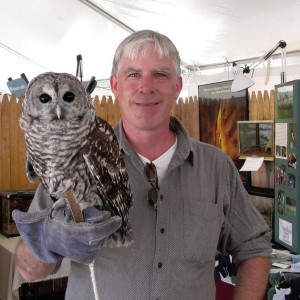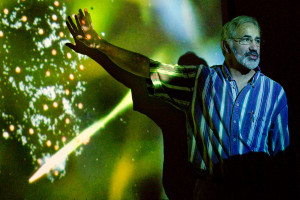Town of Palmer
Angela Panaccione
Conservation Agent, Town of Palmer, Massachusetts

Conservation goals
We manage about 800 acres of conservation land in Palmer, and we have a strong wetlands protection ordinance that goes beyond even state regulations. Palmer is at the confluence of four major rivers, and the heart of the largest watershed within the state, the Chicopee watershed, so we are committed to maintaining the integrity of cold water habitat.
How Connect the Connecticut connects
By connecting our local objectives to regional objectives, and using a shared framework to promote collaboration across federal, state, and local conservation networks, we can help increase resilience and ecological integrity of the larger landscape. This is especially important now with the effects of climate change. If you can propose an action that will not only protect your land, but will protect everyone around you and increase quality of life into the future, that is much more meaningful.
How it will inform work on the ground
A lot of times when discussing land protection options with property owners, the question I get is: If I protect my land permanently, what will that mean 100 years from now when everything is different? This tool helps us show them why their parcel is ecologically valuable in the grand scheme of things. It’s not always useful to talk about specific species with a landowner, unless they happen to be interested in that animal, but this map provides a way to show that land is going to continue to be ecologically important for a variety of reasons, and that by preserving it now, you are making sure climate change won’t impact its value.
These tools give us more resources as land managers to effectively achieve action items within our open space and conservation plans, and to justify these actions within a regional framework for keeping our shared resources resilient.
Example applications
I used the design to convince our Town Council to request special enabling legislation from the state senate to direct the transfer of a 92-acre parcel from MassDOT to the Palmer Conservation Commission. The parcel was taken by eminent domain in the 1960’s when I-90 was under construction, and the Conservation Commission has been trying to acquire it back since 1980. With data from Connect the Connecticut and Mass Audubon’s Conservation MAPPR tool, I was able to show our Town Council and State Senator Ann Gobi the ecological significance of this parcel on the landscape level.
The parcel contains a significant portion of Kings Brook, a cold water fisheries resource, headwater to the Quaboag River and a designated priority habitat for endangered species. It would also provide a continuous protected corridor (of over 2,000 acres) from the Mass Pike to the Palmer/Ware town line, as it directly connects to other town conservation land and fish and wildlife land as well. Sen. Gobi agreed to sign off on enabling legislation for the transfer of the parcel, and presented the bill at a public hearing in Boston in June.
I also used the data and mapping tool to apply for a grant to replace a culvert that represented a significant barrier to fish and wildlife migration, and cuts off two core areas with high Index of Ecological Integrity values. The crossing is on Kings Brook, the same headwater stream we are trying to protect by acquiring the turnpike parcel.
Additional information and resources





 It’s not about where this will and won’t happen, rather, we work through regional partners, called Regional Conservation Partnerships (RCPs), to build capacity to get the work done across the region.
It’s not about where this will and won’t happen, rather, we work through regional partners, called Regional Conservation Partnerships (RCPs), to build capacity to get the work done across the region.
